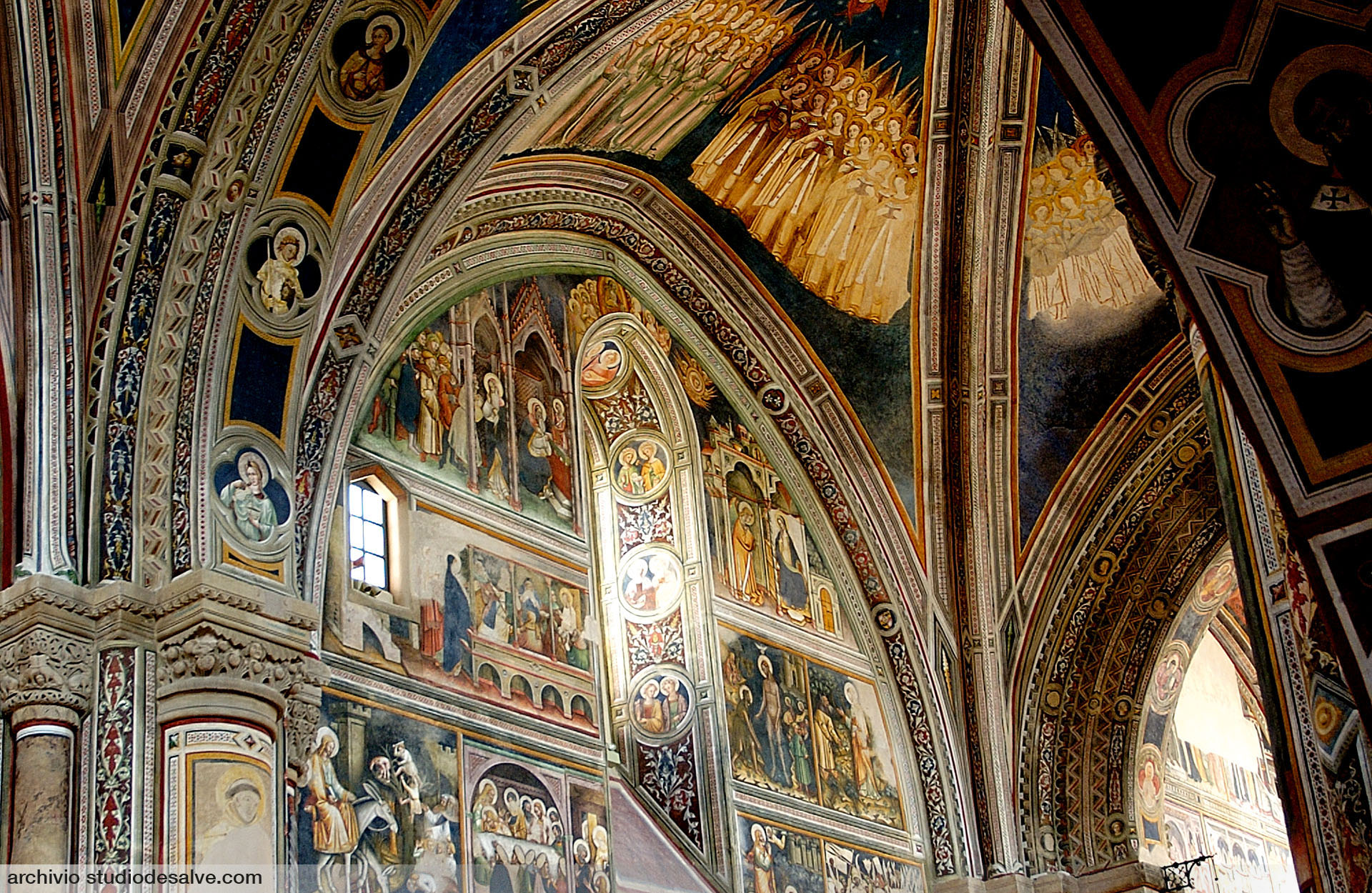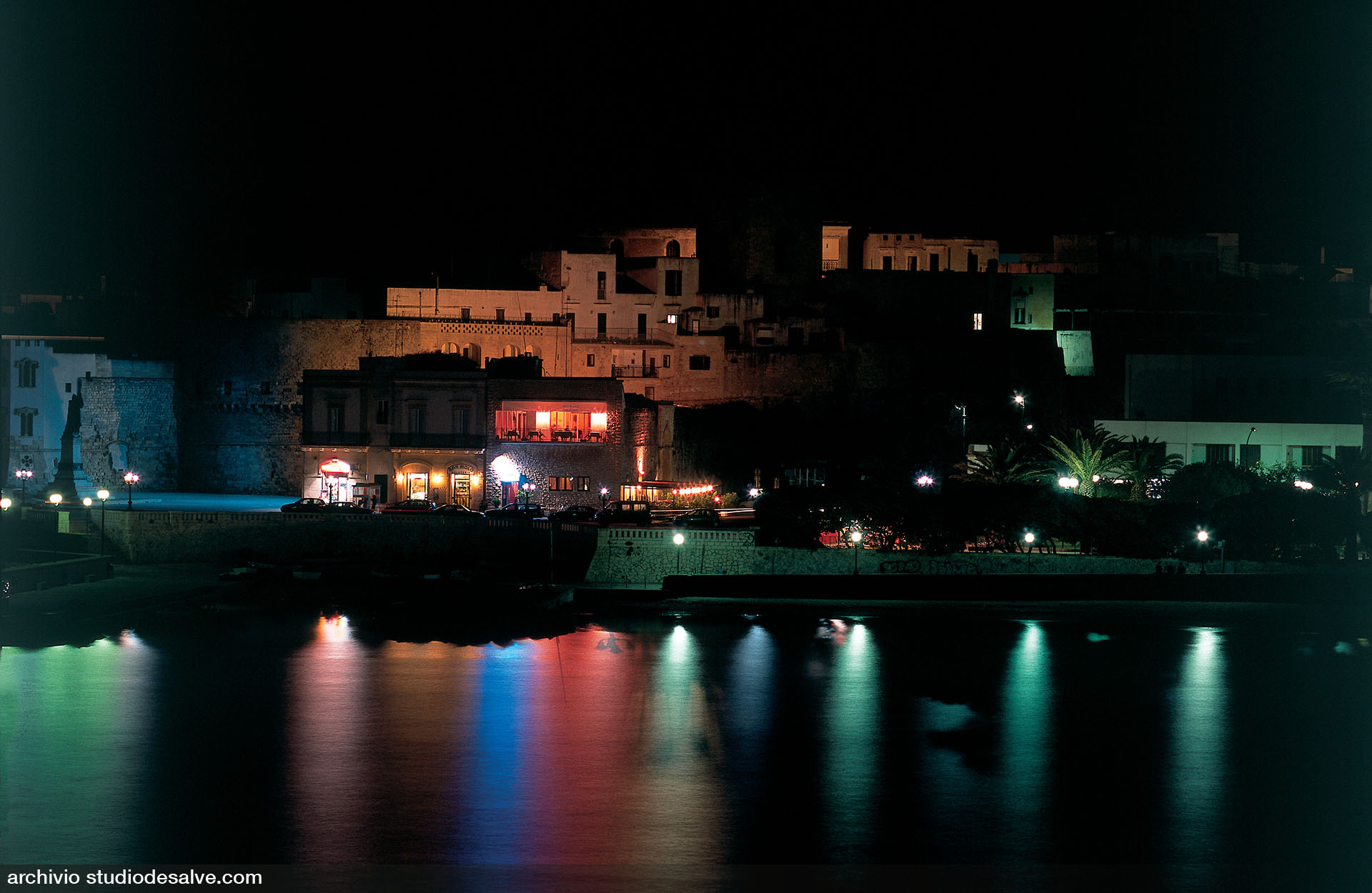TOUR IN SALENTO
There are many cities that you can visit on your trip in Salento, as well as endless attractions that will capture your interest, but it is in the journey through this splendid land that you will find the true essence of this territory. From the countless coastal towers, which shore up the promontories overlooking the sea and frame indescribable landscapes, to the gastronomic delicacies that you can enjoy from place to place, from the farms scattered in the countryside of olive groves to their dry stone walls, a Neolithic reminiscence that does not succumb to pitfalls of time, from the centuries-old olive trees to the baroque cathedrals, from the flowered courtyards to the sunsets by the sea, Il Salento, if you want to really know it, will open up to you and leave you breathless.

GALATINA
The beat of the tambourines marks the time in Galatina, where art and faith meet the taranta and one of the most beautiful frescoed churches in Italy.
Located 20 km south of Lecce, Galatina reveals an artistic splendor that began in the fourteenth century with the Orsini del Balzo.
The narrow streets of the historic center branch off from the three gates of the old city, Porta Luce, Porta Nuova and Porta dei Cappuccini. To introduce the wonders of the ancient village, there is the “lamp without light”, called by the Galatinians “the pupa”, which welcomes the visitor who is about to take the road that leads to the current seat of the Municipality, Palazzo Orsini.
From here, arcades and eighteenth-century palaces embellished with imposing portals and balconies swarm until they subside in front of the majestic Orsiniana Basilica of Santa Caterina d’Alessandria, a true treasure trove of faiths.
You can delve into the time and history of the city by visiting the Pietro Cavoti Civic Museum, with medieval finds and paintings by Galatinese painters, or by descending into the three Basilian crypts of Santa Maria della Grotta, Sant ‘Anna and Santa Maria della Porta, tangible testimony of the escape from persecution of the monks from Byzantium to the regions of Southern Italy.

GRECÌA SALENTINA
Kalòs Ìrtate stin Grecìa Salentina, which translated means “Welcome to the Grecìa Salentina”, that is a linguistic area in the heart of Salento that unites by tradition and culture 11 Salento municipalities of the hinterland: Calimera, Carpignano Salentino, Castrignano de ‘Greci, Corigliano d ‘Otranto, Cutrofiano, Martano, Martignano, Melpignano, Soleto, Sternatia and Zollino. Here once upon a time an ancient language was spoken, Griko, currently taught in schools, but now in decline. In fact, the only ones who still use this language are the elderly.
This Hellenic linguistic area still expresses the Greekness that originally affected a larger area and brings with it a culture and a tradition that are reflected in the small daily reality of the individual municipalities. Some traditions still survive today including the musical review of the Songs of the Passion, or a tradition handed down orally that sees the local singers perform in griko “I Passiuna tu Christu” and “Lu Santu Lazzaru”; and the popular musical heritage enhanced by the very famous itinerant “Taranta Festival”. It is, in fact, a musical review that touches 15 Salento municipalities and ends with the concert of the “Notte della Taranta” in Melpignano.

LECCE
The city is an open-air stage. Each glimpse that this city offers us is a compendium of art, architecture, scenography and amazement at the same time.
The city of the Baroque is in every part a declaration of love for beauty. Of Messapian origin, it has been able to transform shapes and spaces into what we can admire today.
A city that has been able to manipulate the stone making it alive.
Walking through the streets of Lecce, the stone, the concave and convex volutes of the balconies, the twisted columns of the churches, the decorations of the facades, tell you where you are.
Between the view from the top of the amphitheater and the Roman theater, to the Basilica of Santa Croce at every step, even the most weary visitor is rewarded by the beauty of what he can admire.
The centuries do not seem to have scratched this city where Roman reminiscences coexist with seventeenth-century architecture in harmonious spaces where the scent of a freshly baked cottage will make you want to plan your return to a place that has already found a place in your heart.

GALLIPOLI
The Beautiful City lying on the sea is the starting point of one of the infinite paths that you can take if you stay at Palazzo Castriota.
Located a few kilometers away, Gallipoli and its ancient village is one of the jewels of which Salento can certainly boast. Its cobbled streets, its baroque palaces, its churches and its gastronomic specialties make this city an unmissable stop.
Of very ancient origin, the city sees the succession of many populations that have inevitably influenced its development; from the Normans to the Angevins, from the Spaniards to the Bourbons, Gallipoli has in its past many souls that still today coexist between tuff walls and Lecce stone capitals.
The Angevin castle is the first of the many wonders that welcomes visitors; once placed to defend the city, today it is flanked by the twentieth-century bridge that connects the old city to the modern urban fabric, from which a maze of streets branch off that lead to infinite and fascinating paths.

OTRANTO
Among the ancient Salento fortified cities of antiquity, Otranto, the most eastern bulwark of the peninsula, cannot be missed. Listed among the most beautiful villages in Italy and recently recognized as a Cultural Heritage by Unesco, Otranto represents the bridge between the cultures that have coexisted in this area for millennia.
Of Messapian origin, like most of the coastal cities of Salento it has undergone influences and dominations over the centuries, but here more than anywhere else, the link with the East is perceived. From the iconography, to the architecture, from the wind to the typical craftsmanship, everything has a different, almost magical flavor.
The Cathedral with its first-century mosaic, the Aragonese Castle with a pentagonal plan, the Byzantine church of San Pietro are some of the wonders that you can appreciate while walking in the streets of this charming town, but just go out just outside the town to come across crypts and hypogea, and breathtaking landscapes, in the beaches of Alimini or in the most unspoiled stretches of coast such as Porto Badisco.

NARDÒ
The beautiful city of Nardò is a treasure trove of art and nature with its precious baroque historic center, the lush countryside and a long coast with a crystalline sea, where the Porto Selvaggio Park falls.
A city of ancient origins, Nardò is the most populous center in the province of Lecce after the capital, from which it is 26 kilometers away, and holds precious evidence of its history since the settlement of the Messapians. Just 7 kilometers away, the Ionian Sea bathes the hamlets of Santa Maria al Bagno, Santa Caterina and Sant’Isidoro. Visitors arriving from Lecce are welcomed by the seventeenth-century small temple of Osanna, on the edge of the historic center. Here the Baroque dominates which unveils in a magnificent setting in Piazza Salandra, a sought-after film set for years.
Do not miss the Cathedral, the Church of San Domenico, the greatest example of Lecce baroque and the Acquaviva Castle, seat of the Town Hall which can be reached by walking on the ancient paving.
The Neretina countryside, among centuries-old olive trees and expanses of vineyards, is dotted with farms, many of which are fortified. Homeland of the Cellina olive, Nardò produces excellent extra virgin olive oil and quality wine, as well as renowned watermelons.
Along the coast, embellished by the Park of Portoselvaggio and Palude del Capitano with the large pine forest that extends to the sea, imposing watchtowers stand out. Sweet coves with small sandy beaches alternate with wild cliffs, from which to admire a splendid sunset over the sea.


